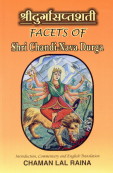Dr.
Chaman Lal Raina
Born in Srinagar, Dr. C. L. Raina
has studied the Shaiva and Shakta scriptures
from the traditional system of Kadi-Vidya of
Kashmir. He had his schooling and college
education in the premier colleges of Kashmir. He
did Honors in Urdu from Aligarh, Masters in
Hindi & English, and a Phd in comparative
religious philosophy. Presently he is teaching
religions of India at Florida International
University (USA).

Dr.
Chaman Lal Raina
 Walnuts
and Shiva Ratri Walnuts
and Shiva Ratri
Walnuts as it is called Doon
in Kashmiri language is an integral part of the
Vedic injunction in the Kashmiri Pandit
religious ethos. Walnut in any Homa is essential
ingredient of the Samagri. >>>
|
|
 About
Soham About
Soham
Soham is the combination of two words viz. SAH
+AHAM. According to the rules of the Sanskrit grammar Sah + Aham becomes Soham
It is the principle of joining of consonant with vowel to form a VARNA/
alphabet. Sandhi means the joining of two words, under the grammatical
rules of the ‘ Sandhi’ in the Sanskrit language. The joining of Sah + Aham
is governed by the principle of Visarga Sandhi. >>>
|
|
|
|
 Saivism in
Prospect and Retrospect
Saivism in
Prospect and Retrospect
The
circuitous upper valley of Vitasta, is the famous
Kashmir in the Himalayan region. There are
Harimukh (Haramukta and Amarnath mounts,
branches off from the great Himalayas a little
further east, proceeds due south and encircling
the sources of Vitasta, turns north west, where it
is called Pir Pantsal or Panchaldhara now Banihal
range). These lesser mountains of the Himalayas
surround the valley of Kashmir on all sides;
leaving only a narrow outlet for the Vitasta at
Baramulla. >>>
|
|
 Shiva
Ratri Shiva
Ratri
Shiva Ratri is
the integrating force of the Sanatana Dharma, popularly known as Hinduism. Shiva
Ratri is the essence of the Yajur Veda, where Shiva is adored as Rudra,
Shambhava, Bhava and Hara. Shiva Ratri is a spiritual journey from Hara state of
mind to the Bhava state of existence. It is a spiritual journey from Samsara to
Moksha. Shiva Sankalpa Mantra helps a devotee to see the Vatuka Bhirava from the
subjective existence to the objective realization in identifying one’s own
self with the Universal consciousness of Bhagavan Shiva. >>>
|
|
|
|
|
|
|
 The Significance
of Navreh - A Shakta Interpretation
The Significance
of Navreh - A Shakta Interpretation
Kashmiri Pandits celebrate
their New Year's Day, Navreh, on Chaitra Shukla Pratipada or the first
day of the bright fortnight of the month of Chaitra. The word 'Navreh'
is derived from Sanskrit 'Nava Varsha' meaning the New Year. On the eve
of Navreh, which falls on Amavasya or the last night of the dark fortnight,
they keep a thali filled with rice, a cup of curds, a bread, cooked rice,
some walnuts, an inkpot and a pen, a silver coin and the Panchanga of the
New Year, as the first thing to be seen at the Brahma Muhurta or the wee
hours. >>>
|
|
 Lecture
Profile: Images, Symbols, Art and Dress in Afro-Indian Diaspora
Lecture
Profile: Images, Symbols, Art and Dress in Afro-Indian Diaspora
External Site.
Religious concepts - images, icons, practices, and symbols are the quintessential of any human ethnicity. Ethnic expressions cannot be kept
in isolation, as the age of information and technology brings human minds
together to attain the higher values of life, and global understanding.
Theses representations express aspects of the human psyche, providing
image or symbol made of stone, wood, and containing geometrical
representations in a particular manner related to socio-cultural/religious
ethnicity. >>>
|
|
|
|
|
 Book
by Chaman Lal Raina Book
by Chaman Lal Raina
Facets of Shri
Chandi-Nava Durga (Mystic Glory of Devi Mahatmya) by Chaman Lal Raina.
Delhi, Sharada, 2004, xxvi, 318 p., ills., ISBN 81-88934-00-3. >>>
|
|
